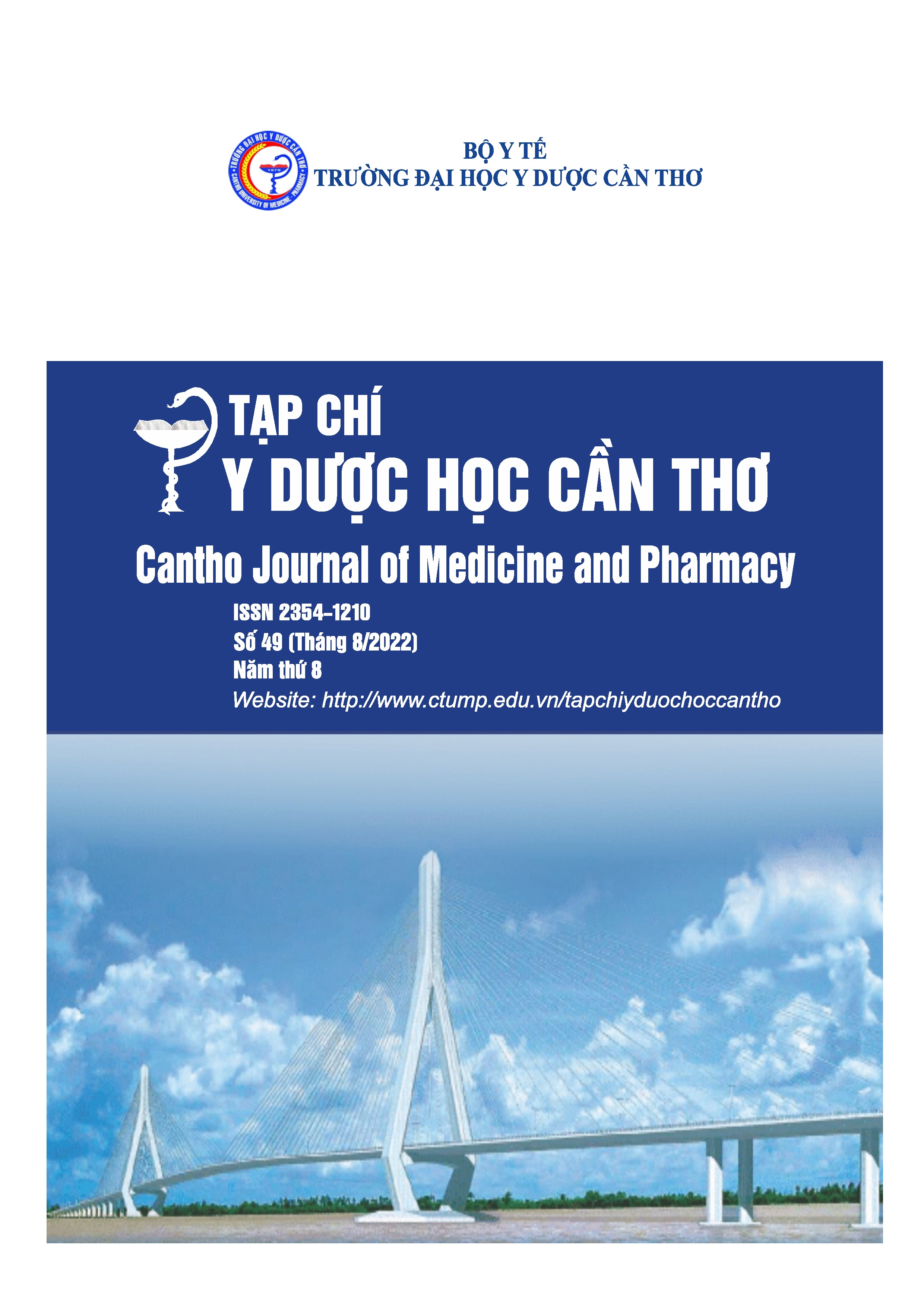RESULTS OF OPEN REDUCTION AND INTERNAL FIXATION FOR BOTH-BONE FOREARM SHAFT FRACTURES
Main Article Content
Abstract
Background: Both-bone forearm shaft fractures are common injuries in orthopedics. At present, plate and screws fixation is a standard surgical method to restore the anatomy of the radius and ulna adequately, thereby returning the desired function, particularly pronation/supination. Objective: To study the radiographic characteristics of both-bone forearm fractures in adults and to evaluate the surgical outcomes of plate and screws fixation in these fractures. Materials and methods: A cross-sectional study included 42 patients treated with open reduction and internal fixation for both-bone forearm shaft fractures from 01/2020 to 3/2022. Results: There were 42 patients (28 men, 14 women, the average age was 42.6416.73), the same level fracture of both bones was 76.19%, and the different level fractures were 23.81%. Evaluated by Anderson outcome classification, the treatment results were excellent, satisfactory, and unsatisfactory in 80.95%, 16.67%, and 2.38%, respectively, and there were no failures. The union rate was 100%. One patient had unsatisfactory results mainly due to segmental fractures of both bones with a severe injury of the soft tissue envelope. Conclusion: Open reduction and internal fixation for both-bones forearm fractures are safe and effective surgery, facilitating the anatomical reduction of the radial and ulnar fractures; fixation stability to early and safe mobilization; thereby restoring the necessary pronation and supination of the forearm.
Article Details
Keywords
Both-bone forearm shaft fracture, open reduction and internal fixation, pronation and supination of the forearm
References
2. Nguyễn Ngọc Toàn, Lê Văn Hiệu, Nguyễn Thị Lý (2020), “Đánh giá kết quả điều trị gãy kín thân 2 xương cẳng tay bằng kết xương nẹp vít tại Bệnh viện Quân Y 175”, Tạp chí Y – Dược học Quân Sự Số 9-2020, tr.56-62.
3. Tào Gia Phú (2015), “Nghiên cứu đặc điểm lâm sàng, X-quang và đánh giá kết quả điều trị phẫu thuật gãy thân hai xương cẳng tay bằng nẹp vít tại địa bàn thành phố Cần Thơ năm 2014-2015”, Luận văn tốt nghiệp Bác sĩ Đa khoa, Đại học Y Dược Cần Thơ.
4. Dung Tran Trung, Khanh Trinh Le, Tuyen Nguyen Trung (2017), “The Surgical Outcomes of Diaphyseal Fractures of Radius and Ulna treated by Plate and Screws Fixation in Vietnam”, Open Journal of Trauma,1(3), pp.066-068.
5. Muralidhar BM, Ravi KB, Madhusudan H (2017), “Surgical management of fracture both bone forearm in adult using limited contact dynamic compression plate”, International Journal of Orthopaedics Sciences, 3(2), pp.852-856.
6. Chapman MW, Gordon JE, Zissimos AG (1989), “Compresion plate fixation of acute fractures of diaphysis of the radius and ulna”, J Bone Joint Surg Am, 71, pp.159-169.
7. Anderson LD, Sisk D, Toom RE, Park WI 3rd (1975), “Compresion-plate fixation in acute diaphyseal fractures of radius and ulna”, J Bone Joint Surg Am, 57, pp.287-297.
8. Frederick Azar (2021), Campbell’s Operative Orthopaedics, 14e, Elsevier Inc, pp. 3097-3140.
9. Charles M. Court-Brown (2015), Rockwood and Greens Fractures in Adults, 8e, Wolters Kluwer, pp. 1121-1177. 10. Richard E Buckley (2017), AO Principles of Fracture Management, 3e, AO Foundation, pp.657-672.


